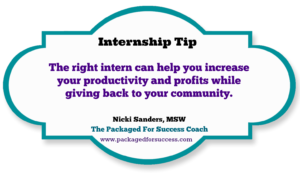Internships: Good for students and for business
By Karris Golden for Business Monthly
Bradley Kinsinger believes internships are essential to educational development and career readiness.
Kinsinger teaches at Hawkeye Community College’s Global Agricultural Learning Center. Part of his job is to ensure internships are beneficial to all parties.
“Internships are a win-win for students and the agricultural industry,” he said. “They help the students get experience in the career they want to go into, and they help the agricultural industry develop talent and gain much-needed employees.”
Trace Steffen agrees. His start-up, HowFactory in Cedar Falls, employs four college interns: two sophomores and two seniors.
“Doing internships right is difficult and expensive,” said Steffen. “If it’s well-planned and well-structured, that investment is absolutely worth it. … If we can engage (an intern) and get them to believe in the company’s vision, what they lack in experience they more than make up for in enthusiasm and engagement.”
The National Association of Colleges and Employers has tracked rapid growth in the number of undergraduate students completing internships. Internships have been on the rise since 2007, with a record 68 percent of the Class of 2016 participating in at least one internship during college.
For the student, “test-driving” a chosen career is key, said Kinsinger. Such experiences help students develop goals, meet business contacts and make informed career choices.
Meghan Jansen, a senior at University of Northern Iowa in Cedar Falls, zeroed in on the impact of internships. She currently works part-time at HowFactory — her fourth internship in as many years.
When Jansen began at UNI, the marketing major said internships were encouraged for juniors and seniors.
Jansen wanted to buck that trend. The Des Moines native sought to intern in a variety of industries, try out a bigger city and get experiences at large companies and possibly a startup.
“I came in with a mindset that the idea that internships are supposed to happen when you’re older is a myth,” she explained. “My parents told me, ‘You’re not going to get an internship until you’re older.’ That made me stir crazy; there was a lot I wanted to do.”
Jansen did check off her wish list. Her first internship began during her freshman year at UNI. She worked part-time at John Deere in quality engineering. The position gave Jansen the opportunity to lead a project that created an online collaboration platform for the department’s engineers.
Jansen’s second internship took place during her sophomore year. She worked at HON Company in Muscatine, where she honed her sales and presentation skills.
Her third internship took her to Wells Fargo Consumer Finance in Phoenix. There, she worked in the student loan division and created a training guide for employees who explain credit and other concepts to traditionally “under-banked” individuals.
At Wells Fargo, Jansen hit pay dirt: five job offers in different cities across the United States. When she graduates in May, she’ll become a project manager in the bank’s Early Talent Management Program and relocate to Charlotte, N.C.
“To have a job waiting for me when I graduate has removed a lot of stress off my shoulders,” she said. “I’d tell college students that shattering the myth that you have to wait (for an internship) is the biggest thing to get past. If I hadn’t gotten right to work, I wouldn’t have this job opportunity.”
The ability to move from an internship into a job is an ideal outcome for students and businesses, said Kinsinger. Some ag students go to Hawkeye with a job already in mind, while others seek to explore what’s available.
“Many of our students grew up on farms, and they intend to return to those farms after they get their education,” he explained. “Internships are a chance for them to get a different experience and expand on what they learned on their farms and in the classroom.”
Hawkeye’s agricultural business and animal science students focus on coursework the first three semesters. The remaining semester is divided into classroom and workplace experiences. During the last eight weeks, students must complete a minimum of 320 work hours that will put their classroom work to practical use.
Throughout the internship, students prepare weekly reports in which they explain challenges they encounter and solutions. Their final report outlines business structure, communication channels and other things they’re learning.
Internships can turn into full-time jobs and long-lasting contacts, said Kinsinger. As a result, students are expected to drive the entire process, beginning with identifying prospective internship hosts.
“We encourage them to seek out opportunities and make contacts on their own, because that’s all part of the educational experience,” he explained. “Employers will contact us, too. When that happens, we post it on the board and expect the students to take the initiative.”
